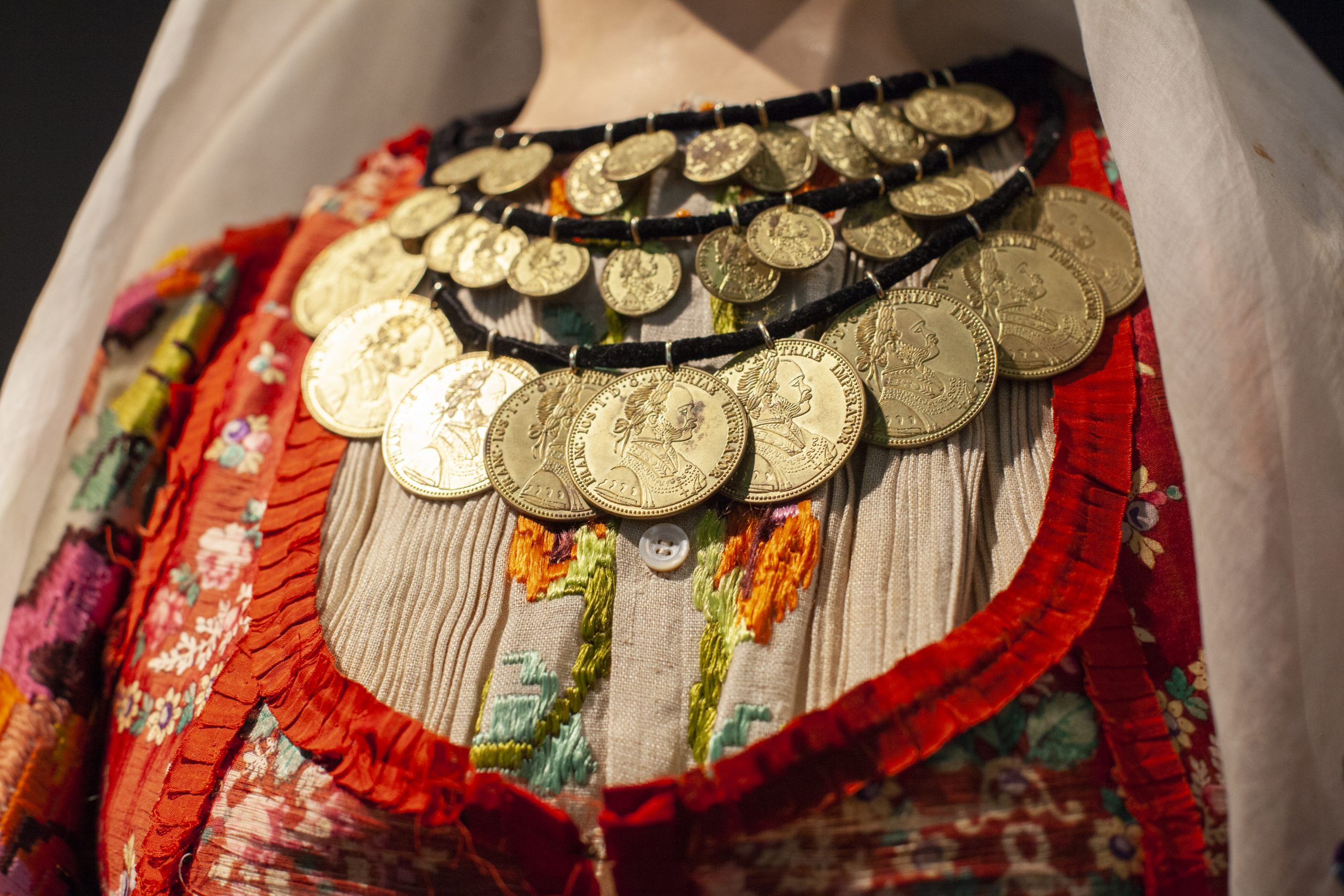Author: Josip Forjan (Traditional Cultural Heritage Centre)
Nikola Tesla Technical Museum Gallery
With its presentation of Croatian traditional clothing in villages along the Kupa River
the Traditional Cultural Heritage Center joins the celebration of the 100th anniversary
of the ethnologic expedition in the Kupa River basin made by the curators of the
Ethnographic Museum in Zagreb Vladimir Tkalčić and Milovan Gavazzi, painters
Srećko Sabljak and Maksimilijan Vanka, and five of their friends, who sailed down
for about a hundred kilometres on the river and visited thirty-four villages on both
banks, researching the ethnographic heritage of the villages along the Kupa river.
The Kupa, a 294 km long river running from Gorski Kotar to the point where it flows into
the Sava River near Sisak, is the third largest river in Croatia after the Sava and Drava. The
basin of the Kupa River is composed of several regional areas of different ethnographic
characteristics, with clothing, or traditional costumes, being one of the most obvious ones.
Traditional clothing in Gorski Kotar, around the source of the Kupa River, was
abandoned in everyday use in favour of urban fashion very early. There are
few original items preserved, mostly in museums, and written records about
traditional clothing are sparse. The clothing was formed under the strong
influence of the Alpine cultural area, evident in the cut and ornaments.
Traditional costumes of the Ozalj area are specific, with a distinction between the costumes
of the area around Kamanje and those in the area around Mahićno, both containing
numerous archaic elements. The most specific element is the headdress for married
women called jalba, made using an old knitting technique on a wooden frame called lucanj.
The costumes of the larger area around Karlovac are mostly consistent, made of
home-made natural beige linen or white cotton fabric decorated with characteristic
blue buttonhole stitch embroidery, which has more recently been increasingly
replaced with the hand- or machine-made rišalje stitch with white or coloured
thread. They are also characterized by small vertical folds called knjiganje on women’s
skirts called krila and small blue vests called lajbak, decorated with a black
ribbon called šujtaš and golden or silver haberdasher’s ribbons called širiti.
The costumes of Rečica, Šišljavić, and the surrounding villages make up a separate
ethnographic unit. These are known for their skirts called krila with small folds and
decorated with horizontal black ornaments called prešiva and križi. These are
decorative white or colourful embroidered surfaces on the back. Men’s clothing
features cross-stitched details in various colours on the shirt, plain-woven trousers
called pantalone with embroidery and vertical sewed-in creases called naborine.
The traditional costume of Donja Kupčina and the surrounding villages is distinct for
its archaic horned women’s headpiece rogi called špišnjak, reminiscent of medieval
headwear. The costumes of Lasinja and Jamnica are of similar types. They are
made of white, plain-woven linen and subtly decorated with white and coloured
embroidery. These are recognizable for horizontal creases on both women’s and
men’s sleeves, men’s trousers and tiny vertical creases on women’s skirts and aprons,
which are often the only decoration on the costume. Married women’s clothing
inventory also contains a double-horned headpiece called rogi, which, in its most
festive variant, is decorated with cross-stitch, glass beads and silk ribbons.
In the villages along the Kupa river from Pokupsko to Sisak, where it enters the
Sava, people used to wear clothing more typical of the Sava river basin with
strong Pannonian characteristics made of large quantities of light plain-woven
linen and decorated with various weaving techniques (u zijev, na prebor) or with
multiple floral embroideries in the peasant baroque style. Married women wore a
characteristic headpiece called kapica (in Pokupsko) or poculica in the villages closer
to Sisak (Letovanić, Brest, Sela), which is more typical for the Sava river area.
The exhibition presents costumes from the Traditional Cultural Heritage Center’s
rich collections, museums, private collections, and collections of folklore groups.
Josip Forjan
Traditional Cultural Heritage Center

